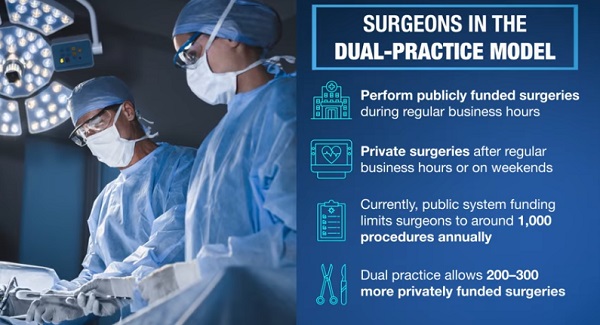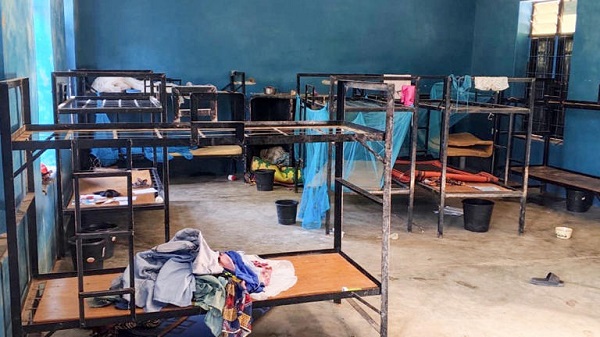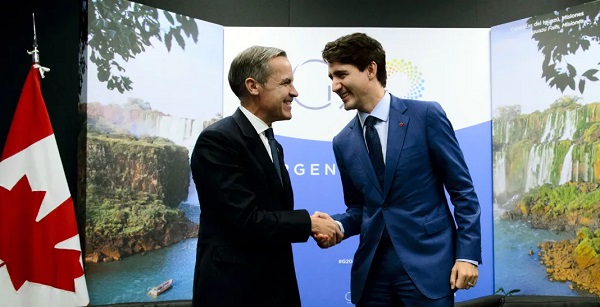Opinion
Public hearing on Molly Banister Extension moved to unknown location on Oct 27.

The public hearing on Big Money vs. Quality of Life has been moved to an unknown location on Oct 27 2020.
Red Deer’s city hall is bending over backwards and expending a lot of capital and effort to accommodate a developer.
Why? 3 times the citizens have been polled by questionaire, responses, and debates and the majority has always supported the Molly Banister Extension. Since 1970s the issue has come up, and the need to accommodate growth, transportation and emergency services, won out.
During that time nearly 500 families backing onto 32 St. 19 St. and 40 Ave have seen increased traffic with no end in sight. Bower Mall was built as a buffer from the Molly Bannister Extension with the understanding that the Extension would be built to allow traffic to access the mall. CBC reported that our air quality was the poorest in Alberta which had the poorest air quality in Canada. Thousands of people have to detour around Sunnybrook and Southbrook to access south side commercial enterprises. 19 St has been expanded to facilitate access to Gasoline Alley, at the detriment to downtown businesses.
The hearing on whether to build 50 houses along the river or build the the extension will be held on Oct. 27 at 1 pm.
The trail is in the field on the west side of the trees near Barrett Drive. It comes out of the trees just about where the bridge would exit, and create a crosswalk for the trail. Solar powered crosswalk lights could be installed, but that would mean a six second delay for hikers, bikers and skaters, but that would save a reported 6 minutes of driving for thousands of people.
Along the east side of the creek, that is filled with dead fall, and blow down, is polluted and choked with weeds after flowing through 2 landfills and a cow pasture there is a fence, 6 foot barb wire topped game-proof fence that kept the cows in. The extension would run along a fence-less woodland but 50 houses would simply have new fencing.
50 houses would introduce non-native plants, grasses and weeds along with pesticides, herbicides, insecticides, fertilizers and pet waste. The extension would see a road in the future, possibly a bridge. 50 houses would use up about 16 acres while the bridge would take up 1 acre. 50 houses would need a road (albeit a residential road) like the extension.
Molly Banister borders mainly on commercial properties about 95% while 32 Street borders mainly on residential properties about 95% and the plan is for 6 lanes for 32 Street and 19 Street.
50 houses means bigger profits for big money but it means diminished quality of life for thousands of people for many, many, many years. The Molly Banister Extension still means big profits for big money. means a better quality of life to thousands for years and it helps lowers the emissions spewing into our air.
Please let the city know your thoughts by e-mailing [email protected]. Thank you.
See you at the hearing at its unknown location on October 27.
Health
Organ donation industry’s redefinitions of death threaten living people

From LifeSiteNews
Playing fast and loose with the definitions of death for the sake of organ donation must stop.
Another congressional committee is investigating more whistleblowers’ complaints regarding the organ transplantation industry. United States House Ways and Means Committee Chairman Jason Smith and Oversight Subcommittee Chairman David Schweikert are seeking answers from Carolyn Welsh, president and CEO of the New Jersey Organ and Tissue Sharing Network (NJTO), regarding multiple allegations of legal and ethical violations on her watch.
The complaints include the horrific case of a “circulatory death” organ donor who reanimated prior to organ retrieval. Despite the fact that the patient had regained signs of life, NJTO executives actually directed frontline staff to continue the organ recovery process. (Thankfully, hospital personnel at Virtua Our Lady of Lourdes Hospital in Camden, New Jersey, refused this request.) NJTO is also accused of pressuring the families of potential donors by falsely implying the New Jersey Department of Motor Vehicles had registered a consent to donate when that was not known to be the case. NJTO apparently also continued to insist that people were registered donors even after they had removed their consent to donate from their driver’s licenses. The official complaint further states that NJTO allegedly tried to delete evidence pertaining to the committee’s investigation.
Since 1968, when 13 men at Harvard Medical School redefined “desperately injured” people as being dead enough to become organ donors, organ procurement has continued to push the boundaries of life and death in a never-ending quest for more organs. When the first and only multicenter prospective study of brain death discovered in 1972 that a brain death diagnosis did not invariably correlate with a diffusely destroyed brain, principal investigator Dr. Gaetano Molinari pointed out that “brain death” was a prognosis of death, and not death itself. Dr. Molinari wrote:
[D]oes a fatal prognosis permit the physician to pronounce death? It is highly doubtful whether such glib euphemisms as ‘he’s practically dead,’… ‘he can’t survive,’ … ‘he has no chance of recovery anyway,’ will ever be acceptable legally or morally as a pronouncement that death has occurred.
But despite Dr. Molinari’s doubts, history shows this is exactly what has been accepted, and the rising numbers of people who have been taken for organ harvesting while still alive bears this out. Even though “brain dead” TJ Hoover III was still looking around and visibly crying such that two doctors refused to remove his organs, Kentucky Organ Donor Affiliates ordered their staff to find another doctor to perform the procedure. “Circulatory death” donor Misty Hawkins was found to have a beating heart when her breastbone was sawed open for organ procurement. And Larry Black Jr. was rescued from the operating room table just minutes before having his organs removed, and went on to make a full recovery.
Given that we have been stretching the definitions of death for nearly 60 years, is it any wonder that organ procurement personnel appear to be thinking “he’s practically dead,” “he can’t survive,” “he has no chance of recovery anyway” as they push still-living people towards the operating room?
But it’s not just organ procurement teams that are pushing these new definitions of death. Just three weeks after failing in their attempts to broaden the legal definitions of death by revising the Uniform Determination of Death Act (UDDA), the American Academy of Neurology (AAN) published a new brain death guideline that explicitly allows brain death to be declared in the presence of ongoing brain function. Since this obviously does not comply with the UDDA, which requires “the irreversible cessation of all functions of the entire brain including the brain stem,” the AAN has been trying to get around the law by contacting state health departments, medical boards, medical societies, and hospital associations requesting that they acknowledge the AAN’s brain death guideline as the “accepted medical standards” for declaring neurological death.
The AAN has also just published a position statement of additional guidance on brain death discussing how to handle objections to the brain death diagnosis. Even though the AAN’s brain death guideline does not comply with U.S. law and has been proven to be unable to predict whether or not a brain injury is irreversible, the AAN still wants to make the use of their guideline mandatory. If a family’s objection to a brain death diagnosis cannot be overcome, the AAN says that life support may be unilaterally withdrawn – over the family’s objections. The AAN also says that clinicians are professionally obligated to make a brain death determination, and that they should be credentialed to do so according to the standards of the AAN guideline. Laughably, the AAN recommends the Neurocritical Care Society’s brain death determination course, which consists of a one-hour video, followed by unlimited attempts to correctly answer 25 questions, following which a certificate of completion can be had for as little as six dollars.
The Dead Donor Rule is an ethical maxim stating that people must neither be alive when organs are removed nor killed by the process of organ removal. Redefining neurologically injured people as being “brain dead” and redefining people who could still be resuscitated as being dead according to “circulatory death” standards have for too long allowed organ procurement teams to meet the letter of the Dead Donor Rule through sleight of hand. Playing fast and loose with the definitions of death for the sake of organ donation must stop. Patients with a poor prognosis must not be considered “dead enough” to become organ donors. People registering as organ donors must be given fully informed consent as to the risks involved.
Even utilitarian philosopher Dr. Peter Singer has called brain death an ethical choice masquerading as a medical fact. Imposing mandates that force patients and doctors to accept these questionable ethical choices is NOT the best way to establish trust.
Heidi Klessig MD is a retired anesthesiologist and pain management specialist who writes and speaks on the ethics of organ donation and transplantation. She is the author of “The Brain Death Fallacy” and her work may be found at respectforhumanlife.com.
International
Boris Johnson Urges Ukraine to Continue War

By Martin Armstrong
Trump’s proposal for peace in Ukraine has been met with an overwhelming condemnation from the world’s neocons. Former UK Prime Minister Boris Johnson reemerges from the shadows whenever he hears word that a war may be winding down. He played an instrumental role in persuading Zelensky not to negotiate a peace treaty with Russia when it was apparent that Ukraine could not easily win, and now, Johnson is urging Ukraine to continue the war.
“Imagine that you are Vladimir V. Putin and you are spending a calm Saturday in the Kremlin… You casually watch the television news, and you cannot help but smile at the incompetence of your opponents, at the astonishing weakness of the West. You have lost more than a million soldiers, killed and wounded, in your attempts to subdue Ukraine. You have still failed to capture more than 20 percent of the country’s territory. Your economy is faltering. And now they are talking about some new 28-point plan to end the war – and it could have been written entirely by the Kremlin,” Johnson warned.
In typical neocon fashion, Johnson wants to paint the proposal as a victory for Russia. He acknowledges millions have died, but since they are Russian, their lives do not matter. Continue the slaughter at the expense of the people.
Johnson declared that Britain was in a proxy war with Russia back in November 2024. “It has been pathetic… Let’s face it: We’re waging a proxy war but not giving our proxies the ability to do the job. For years now, we’ve been allowing them to fight with one hand tied behind their backs, and it has been cruel,” he admitted one year ago. Why would Britain feel threatened by Russia? Why would any sane leader thrust their people into a battle that is not theirs to fight?
The head of M16, Sir Richard Moore, also came out in November 2024, admitting British intelligence was discreetly fighting on behalf of Ukraine. “We cherish our heritage of covert action, which we keep alive today in helping Ukraine resist the Russian invasion,” Moore commented.
Moore and Johnson know that Russia has no incentive to invade Europe, especially Britian. There is absolutely nothing for Putin to gain. Europe, on the other hand, has everything to gain through conflict with Russia. They see Ukraine as the ultimate entryway into Russia
War is a great way to default on debts. You get to form a new government, and they always disavow the debts of the previous government. Europe has been committing economic suicide. Between the COVID-19 Lockdowns, the NET-ZERO Climate Change, and then the sanctions on Russia that doubled their fuel costs, you could not ask for a more brain-dead group of politicians who have ZERO comprehension of even how the economy functions.
Plain and simple—Russia invaded due to the West’s failure to honor the Minsk Agreement. The neocons disregard the proposal entirely and conveniently disregard the original signed agreement when discussing conceding territory.
“The document offers Ukrainians not only to give up any attempts to reclaim Crimea or Donbas, but also to cede vast territories, including about 250,000 Ukrainians whom the Russians do not even control. Of course, you knew your negotiators would try something like that. But you never believed anyone would take this seriously. You can’t believe that President Trump would back this plan, because it is a complete betrayal of Ukraine,” Johnson continued in his recent writing.
LET THE PEOPLE VOTE! The ethnically Russian people living in Ukraine have been unable to decide on their leadership. Zelensky outlawed their religion and language. Everyone believes they are protecting the people in these regions from the other side, but only one side is open to learning the people’s wishes. The 28-point plan saves the PEOPLE of both Russia and Ukraine. Russia cannot abandon the war without guarantees that NATO will back down and Ukraine is merely an EU puppet. Zelensky now has two days to decide whether he is willing to destroy his nation for the neocons.
-

 Crime2 days ago
Crime2 days agoCocaine, Manhunts, and Murder: Canadian Cartel Kingpin Prosecuted In US
-

 Health2 days ago
Health2 days agoBREAKING: CDC quietly rewrites its vaccine–autism guidance
-

 Alberta1 day ago
Alberta1 day agoPremier Smith explains how private clinics will be introduced in Alberta
-

 Censorship Industrial Complex1 day ago
Censorship Industrial Complex1 day agoUK Government “Resist” Program Monitors Citizens’ Online Posts
-

 Bruce Dowbiggin2 days ago
Bruce Dowbiggin2 days agoElbows Down For The Not-So-Magnificent Seven: Canada’s Wilting NHL Septet
-

 Business1 day ago
Business1 day agoUS Supreme Court may end ‘emergency’ tariffs, but that won’t stop the President
-

 International1 day ago
International1 day ago“The Largest Funder of Al-Shabaab Is the Minnesota Taxpayer”
-

 International1 day ago
International1 day ago50 of the 315 students and 12 staff abducted from Catholic school in Nigeria last week have escaped








